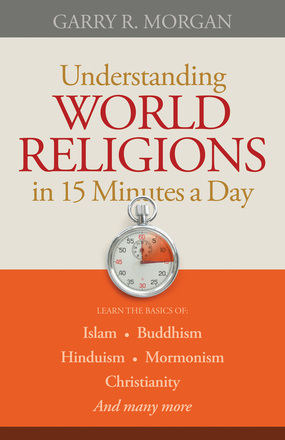Garry A. Morgan defines religion as "an organized system of beliefs that
answers ultimate questions and commends certain actions or behaviors based on
the answers to those questions (p. 16).” In this book, he makes a short, but
accurate description of different religions or beliefs, which he selected based
on the previous definition; he provides answers to life questions from the
different viewpoints. Each chapter is dedicated to one religion or sets of
beliefs.
When
skimming the index, I was a bit surprised that some chapters refer to more
than one religion, or that there were several chapters for one, like
Christianity or Islam. Please bear with me in this respect. It may
seem obvious that the largest religions nowadays get some sort of special
treatment. However, Mr. Morgan also considers the different groups within
a religion, which became to be unique whether by historical, doctrinal or even
geographical reasons, like Evangelical or Protestant Christianity. In other cases, he describes the changes the
same religion has had with time. In other words, I was amazed at how
informative this little book is, despite a simple – but challenging format; it
is a taxing quest to concise and accurate with this topic.
I personally learned a lot from this book, and what I liked the best is that I can find in it the right information not only to use it myself (apologetically), but also to develop a better understanding about some movements or cultural products, like movies or pop music. In this sense, this book is not exhaustive, but a sort of compass. For instance, Mr. Morgan describes the political and historical context within which the Catholic church came to be, but he does not mention the worship of Mary or the saints in this chapter; he makes a reference to it in another part of the book. I personally think that this fact would be more relevant in the chapter of the Catholic church. However, it does not make the information Mr. Morgan provides less explicit or meaningful.
I personally learned a lot from this book, and what I liked the best is that I can find in it the right information not only to use it myself (apologetically), but also to develop a better understanding about some movements or cultural products, like movies or pop music. In this sense, this book is not exhaustive, but a sort of compass. For instance, Mr. Morgan describes the political and historical context within which the Catholic church came to be, but he does not mention the worship of Mary or the saints in this chapter; he makes a reference to it in another part of the book. I personally think that this fact would be more relevant in the chapter of the Catholic church. However, it does not make the information Mr. Morgan provides less explicit or meaningful.
I
would definitely recommend this book as an introductory guide for someone who
would like to become familiar with the main religious movements our time. It
will also aid in identifying the different ideas that these beliefs have
introduced in our schools, culture, institutions and even business enterprises. As I said, it is not exhaustive, but it
is definitely informative and contemporary.
It would be the first step in understanding the great kaleidoscope that
has been formed due to immigration and social interaction. Personally, this
book made me want to know more about some of the details the author describes;
I had to go to the internet and research more on some topics – this makes it a
good book for me. With the overwhelmingly
vast web sources, it definitely made it easier to refine searches.
Only
a vast experience and deep understanding could make a book like this so simple
in format, yet so meaningful.
I
received a complimentary copy of this book from Bethany Publishers, in exchange
for an honest review. In no way did this
bias my opinion on the book or on the author.


No comments:
Post a Comment